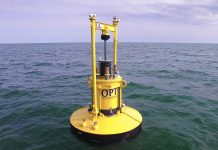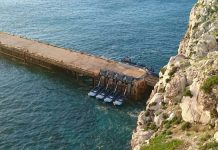by Debra Fiakas CFA
Three public companies end our series on wave and tidal power development. Marine and HydroKinetic energy has only recently received enough interest from scientists and engineers to merit an acronym – MHK. It is an all-encompassing category, stretching across ocean tides and waves and reaching into the currents of inland rivers and straights. It is separated from hydropower, which involves the construction of dams to create elevation differences in water levels that can be used to turn turbines.
Still this promising source of renewable energy is populated mostly by small, private companies that survive on government grants and investments from family and friends. A few angel investors have also found their way to MHK, but minority investors have few options.
Ocean Power Technology (OPTT: Nasdaq) has been previously featured in our articles. The post ‘Ocean Powers Up the Big Apple’ on June 26, 2015, described the company’s success in getting permits to place one of its power buoys of the coast southeast of New York City. In January 2016, the company announced the achievement of milestones in the project, including a generation record of 32 kilowatt hours for a twenty-four hour period. Most importantly the system is still working despite extreme ocean conditions since deployment in October 2015.
In the twelve months ending October 2015, Ocean Power managed to earn $1.4 million in total sales, mostly from engineering work on development projects. Of course, still in a developmental stage, Ocean Power reported a deep net loss of $12.7 million. The company used $12.1 million in cash to support operations during this period, leaving $10.4 million in the bank at the end of October last year. As much as half of that is probably gone, unless management found a way to bring in more revenue or cut costs. Indeed, in January 2016, the company received $1.7 million from the State of New Jersey in the form of business tax credits.
Carnegie Wave Energy Ltd. (CWGYF: OTC/PK or CWE.ASX) is another public company option on wave energy. The company has patented a novel design for an underwater device that captures energy from ocean current movements. The device is tethered to the ocean floor and remains below the ocean surface. The company has spent over $100 million to develop the device and has completed over 10,000 hours of testing.
That price tag can only be justified by a significant commercial opportunity. The primary application of the device is to power desalination plants on-shore, but excess electricity could be delivered to an electrical grid. Island applications seem to have merit as well. Carnegie has partnered with Western Power, an energy utility in Western Australia, to develop a project at Garden Island. Construction is scheduled to begin yet in 2016 on six of the wave power devices and a desalination plant. When completed the Australian Department of Defense has pledged to buy the power and water supplies.
Both Carnegie and Ocean Power are priced more like options on their technology than companies with sales and earnings expectations. For risk averse investors or those with shorter investment horizons that might be required to see these developmental stage companies to full commercial operations, there is an alternative.
Lockheed Martin (LMT: NYSE) has taken an interest in wave and tidal power generation. The company has considerable experience in maritime systems and tidal power apparently does not seem like a big stretch for its engineers. Lockheed is a partner of Atlantis Resources Ltd. (ARL: LN), which was featured in this post in February. Atlantis is deploying its proprietary turbine in the largest tidal power project so far off the coast of Scotland. Lockheed will be manufacturing the nacelle or the business component of the Atlantis tidal turbine and supplying the controls and gearbox. Then Lockheed will serve as the system integrator and use is considerable balance sheet strength to provide the required project assurances to the owner.
Make no mistake, LMT is no small-cap company. Lockheed Martin reported $46.1 billion in total sales in 2015, providing $3.6 billion in net income or $11.46 per share. Of course, a share of Lockheed is more than a stake in tidal power. Lockheed is still an aerospace company with additional interests in communications and security technology and services. Tidal power at its current state of development is merely a drop in Lockheed’s very large bucket. Some investors might take Lockheed’s partnership with Atlantis as a cue, much like the purchase of shares by an insider. The logic is that a large company like Lockheed would not bother with a very small company like Atlantis and its tidal power project, it its engineers and planners did not see some potential in the sector. It could be an appealing investment. LMT is trading at 16 times the consensus earnings estimate for Lockheed in the year 2016. The stock also offers a dividend yield of 6.6%.
Neither the author of the Small Cap Strategist web log, Crystal Equity Research nor its affiliates have a beneficial interest in the companies mentioned herein. Ocean Power Technologies and Carnegie Wave Power are included in the Ocean Group of Crystal Equity Research’s Electric Earth Index of company’s developing power sources from the earth.




